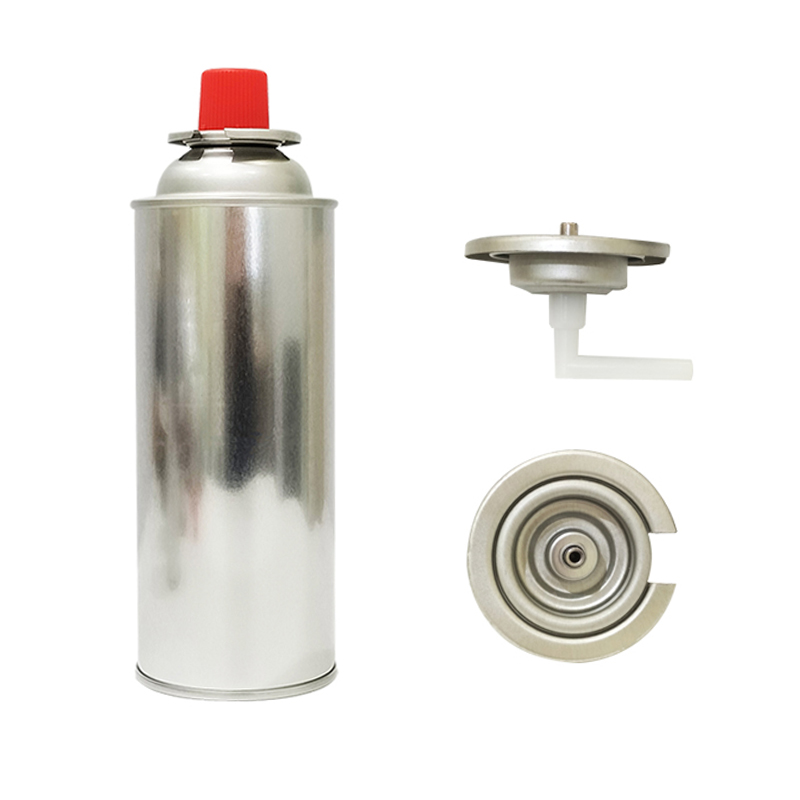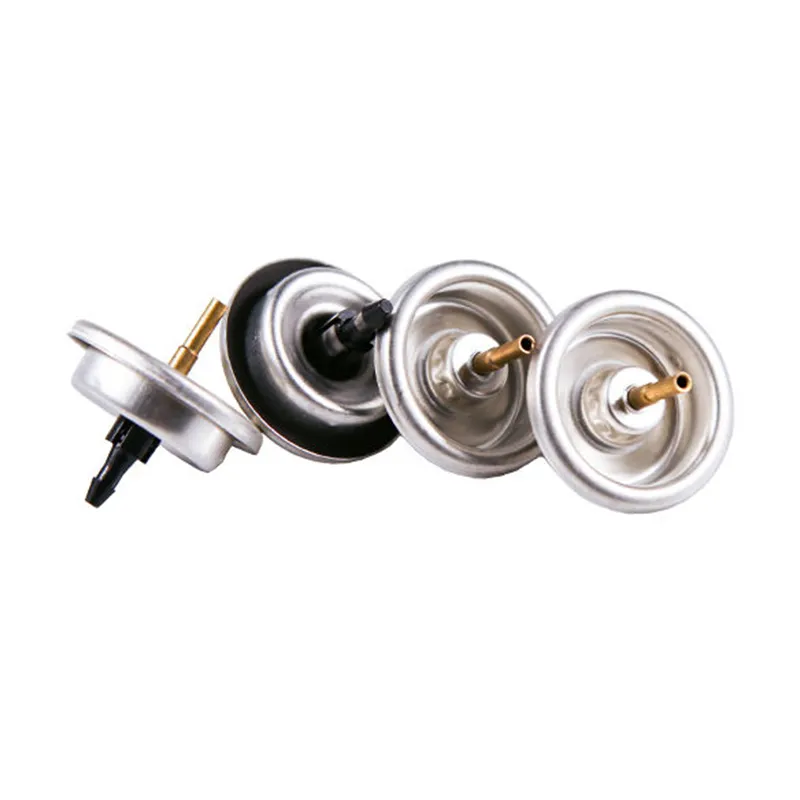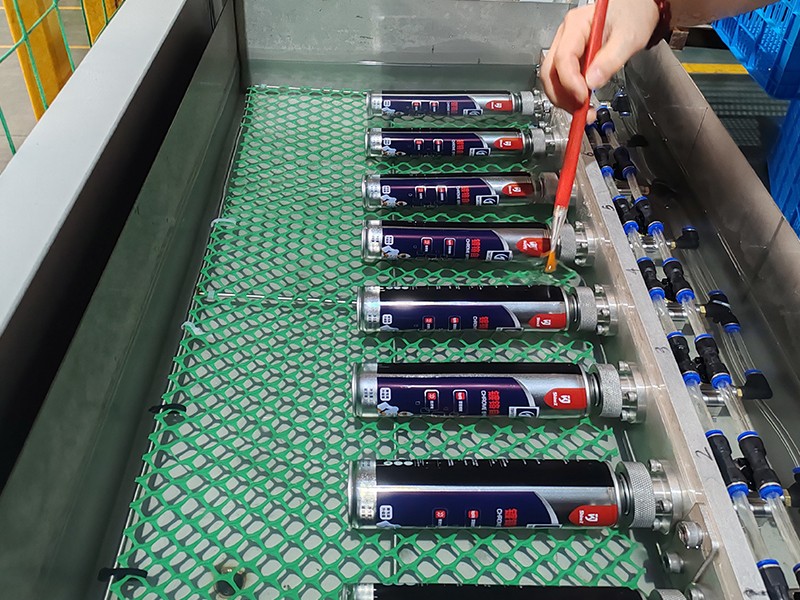In daily life and industrial applications, three-piece aerosol cans are a very common packaging container, widely used for products such as hairspray, air fresheners, paint sprays, lubricants, and insecticides. When using a three-piece aerosol can, people usually hold it upright as instructed in the instructions.
However, some users may use a three-piece aerosol can upside down for convenience, raising the question: Can a three-piece aerosol can be used upside down? This article will provide an in-depth analysis of this issue from a professional perspective, combining the internal structure and working principles of a three-piece aerosol can.

What is a three-piece aerosol can?
A three-piece aerosol can is a high-pressure, sealed container consisting of a body, a base, and a mouthpiece (valve assembly). Because it is assembled from three components, it is called "three-piece." These aerosol cans are often made of tinplate or tin-plated steel, offering both strength and corrosion resistance.
Internal Structure of a Three-Piece Aerosol Can
• Can Body: Bears internal pressure and is the main component of the container.
• Can Bottom: Pressed and crimped, it connects to the can body to ensure a tight seal.
• Can Spout and Valve: Mounted on the top, controls the outlet of sprayed liquid and gas.
• Strap (conduit): Extends from the bottom of the valve to the bottom of the can and is used to draw liquid from the bottom.
• Contents and Propellant: A three-piece aerosol can contains a specific formulation of liquid and gas. The liquid is the product itself (such as paint or hairspray), while the propellant is typically liquefied propane, butane, or compressed nitrogen.
This structure determines the spray direction and usage of a three-piece aerosol can.

How a Three-Piece Aerosol Can Works During Normal Use
When the can is upright, the valve at the top is connected to the straw at the bottom. When the user presses the valve:
• Straw Function: The straw draws liquid from the bottom of the can to the valve.
• Propellant Pressurization: Liquefied or compressed gas provides pressure, causing the liquid to be sprayed.
• Nozzle Atomization: Liquid passes through the nozzle and is atomized into fine particles for spraying.
Thus, when upright, a three-piece aerosol can sprays liquid smoothly and evenly, meeting the desired effect.
What happens when a three-piece aerosol can is inverted?
1. Change in the Working Position of the Straw
When a three-piece aerosol can is inverted, the straw opening is no longer located at the bottom of the liquid, but toward the headspace of the can. At this point, the straw primarily comes into contact with the propellant gas, not the liquid contents.
2. Spray Results
• Primarily Gas: When inverted, most sprays are gas, not liquid.
• Unstable Spray: Even if a small amount of liquid is sprayed with the gas, it will be intermittent and uneven, significantly reducing the spray quality.
• Product Waste: Liquid cannot be sprayed properly, resulting in inefficient use of the remaining contents in the can.
Therefore, under normal circumstances, three-piece aerosol cans cannot be used properly when inverted.

Distribution of Gas and Liquid When Inverted
From a physical perspective, the liquid and gas in a three-piece aerosol can exist in separate layers:
• The liquid has a higher density and settles at the bottom of the can.
• The propellant gas has a lower density and forms a vapor phase at the top of the can.
When the aerosol can is upright, the straw inlet is located in the liquid layer, allowing the liquid to be drawn out and atomized.
When the aerosol can is inverted, the straw inlet is located in the vapor phase, and the can is naturally sprayed with gas. This is determined by fluid statics and gravity and does not change with the can's shape.
This is also the fundamental reason why the instructions for three-piece aerosol cans always require them to be kept upright.
What problems may arise from using a three-piece aerosol can inverted?
1. Significantly reduced spray efficiency
When inverted, the straw cannot draw in the liquid, resulting in primary spray of gas, preventing the liquid contents from being atomized and sprayed properly.
2. Premature Propellant Consumption
Expelling a large amount of gas is equivalent to premature propellant consumption. As the propellant decreases, the pressure inside the can is insufficient, making it difficult for the remaining liquid to be sprayed smoothly even when the can is upright, resulting in waste of excess product.
3. Uneven Liquid Spray
In some cases, inverted use may result in the spraying of a mixture of liquid and gas. The liquid sprayed from the nozzle will appear as droplets rather than atomized liquid, which can easily lead to localized liquid accumulation, resulting in dripping or spotting.
4. Valve and Nozzle Clogging Risk
Irregular spraying can cause liquid backflow or accumulation at the valve, increasing the risk of clogging and shortening the lifespan of the three-piece aerosol can.
5. Potential Safety Hazards
When spraying inverted, if the propellant is a flammable gas, such as propane or butane, the gas will be released and dispersed in a concentrated manner, increasing the risk of fire and explosion if exposed to an ignition source.
Three-Piece Aerosol Can Valve and Straw Design Details
The valve and straw of a three-piece aerosol can are critical components for proper upright spray operation.
• Valve Structure: Typically a spring-loaded one-way valve that opens when pressed and closes when released. This valve ensures stable internal pressure and prevents leakage when the can is not in use.
• Straw Length: Designed to extend to the bottom of the can, it maximizes the use of the liquid.
• Sealing: The connection between the valve and the straw is precisely machined and sealed to prevent leakage when inverted or shaken.
The fundamental goal of these designs is to facilitate "upright spraying." If the user holds the can upside down, the advantages of the valve and straw design are lost.
Common Misconceptions About Using Three-Piece Aerosol Cans Inverted
Myth 1: Spraying inverted speeds up the process
In fact, spraying inverted sprays propellant gas, not the liquid contents, which results in propellant waste.
Myth 2: Spraying inverted sprays the remaining liquid
Some users believe that turning a three-piece aerosol can upside down helps spray when it has residual liquid. In reality, the straw is designed to reach the bottom of the can. A failure to spray remaining liquid is often due to insufficient propellant pressure, not a problem with the straw.
Myth 3: All aerosol cans can be used inverted
Only a very few specially designed three-piece aerosol cans can be sprayed inverted; most standard models do not have this feature.
Comparison of Upright and Inverted Use of Three-Piece Aerosol Cans
Usage | Jet | Effect | Propellant consumption | Safety |
Upright spray | Liquid atomization | Uniform and stable | Normal | High |
| Inverted spray | Gas or liquid droplets | Uneven and ineffective | Rapid consumption | Hazards |
The comparison table clearly shows that upright spraying is the original design and optimal use of three-piece aerosol cans.

Professional Conclusions on Inverted Use of Three-Piece Aerosol Cans
Analysis of the structure, principles, and post-inversion spray mechanism of three-piece aerosol cans leads to the following conclusions:
• When used inverted, conventional three-piece aerosol cans generally only spray gas, not liquid.
• Inverted spraying reduces spray efficiency, wastes propellant, and increases residual liquid.
• Inverted use can also pose safety risks, especially when using flammable propellants.
Only a few specially designed three-piece aerosol cans can be used in an inverted position, but these are relatively rare and usually clearly stated in the instructions.
Therefore, from a professional perspective, ordinary three-piece aerosol cans are not suitable for inverted use. Users should strictly follow the instructions and keep the can upright to ensure effective and safe use.
Does Dekai offer competitive prices for bulk orders?
Yes. At Dekai, we specialize in bulk sales and wholesale purchasing. As a factory-direct supplier in China, we eliminate middleman costs and offer cheap prices without compromising quality. Buyers can purchase tinplate cans, lids, and aerosol packaging at discounted wholesale rates.
If you are looking to buy wholesale tinplate packaging from a Chinese manufacturer, Dekai is your best choice for quality, price, and reliable supply.

